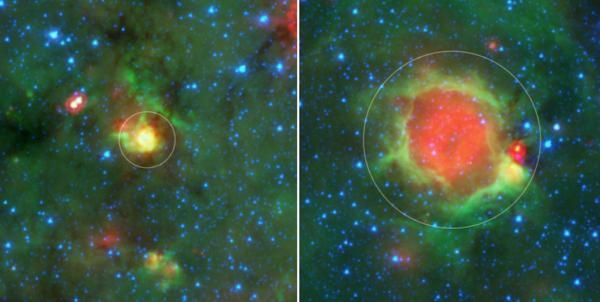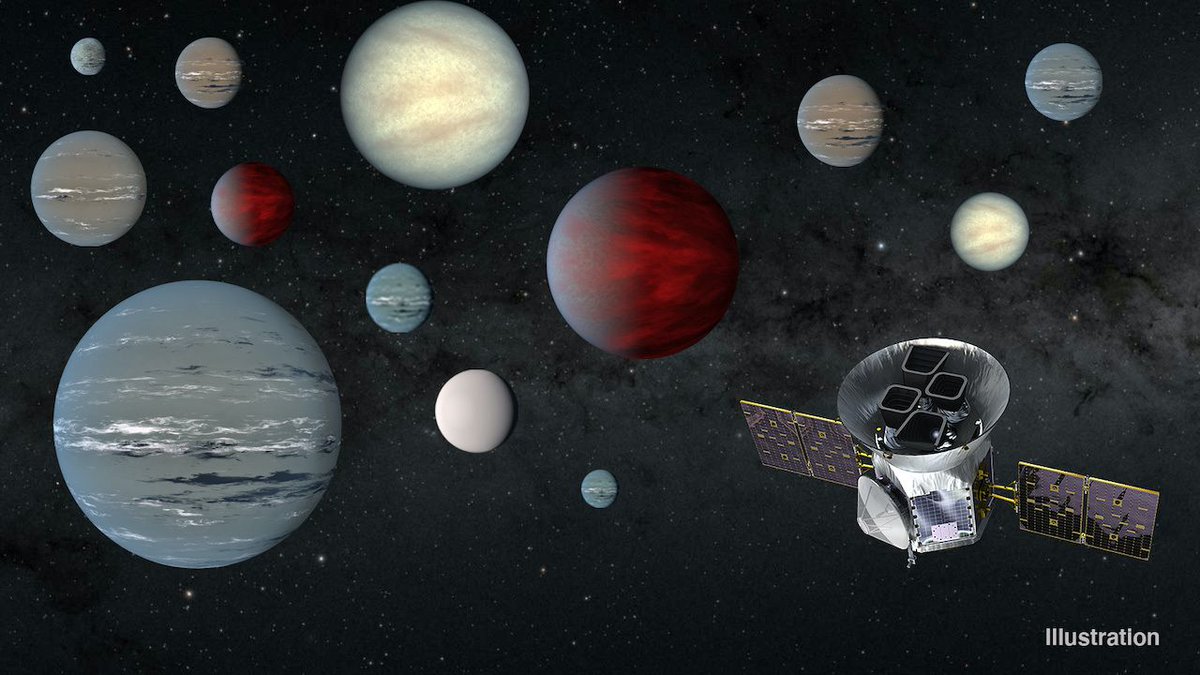AI is often touted as being particularly good at finding patterns amongst reams of data. But humans also are extremely good at pattern recognition, especially when it comes to visual images. Citizen science efforts around the globe leverage this fact, and recent results released from the Milky Way Project on Zooinverse show how effective it can be. The project’s volunteer team identified 6,176 “yellowballs”, which are a stage that star clusters go through during their early years. That discovery helps scientists better understand the formation of these clusters and how they eventually grow into individualized stars.
Continue reading “Citizen Scientists Discover a new Feature in Star Formation: “Yellowballs””Trojan Mission Lucy Tested its Solar Panels for the First Time. Those Things are Huge
Space missions often have to go where the sun don’t shine. Or at least where it shines very faintly. That is particularly important if the mission draws its power from the sun. Luckily, engineers have a way of dealing with that problem – just make really really big solar panels. That is exactly what they did for Lucy, a mission to visit the Trojan asteroids around Jupiter. Those sails have now been tested on the ground, and they are magnificent.
Continue reading “Trojan Mission Lucy Tested its Solar Panels for the First Time. Those Things are Huge”What Would Raindrops be Like on Other Worlds?
Precipitation is much more widespread throughout that solar system than commonly assumed. Obviously it rains water on Earth. But it snows carbon dioxide on Mars, rains methane on Titan, sulfuric acid on Venus, and could potentially rain diamonds on Neptune. The type of material falling out of the sky is almost as varied as the planets themselves. New research from a team led by Kaitlyn Loftus at Harvard found a similarity for all of the liquid materials that constitute rain throughout the solar system – all of the drops, no matter the material, are roughly the same size.
Continue reading “What Would Raindrops be Like on Other Worlds?”What are the Best Ways to Search for Technosignatures?
The search for extraterrestrial intelligence (SETI) has long roots in human history. With the advent of modern technologies, scientists were finally able to start scanning the skies for any sign of life. When the search first started back in the 1960s, it focused almost exclusively on trying to detect radio signals. Over the decades, no irrefutable evidence of any artificial radio signals was ever found. Financial support started to drift away from the discipline, and where the money goes so do many scientists.
But more recently, the spike in interest in exoplanet research has breathed new life into the search for intelligent life, now commonly referred to as the search for “technosignatures”. In 2018, NASA sponsored a conference where scientists who were involved with the field came to discuss its current state. That meeting was followed up by a meeting last year sponsored by the Blue Marble Institute, which NASA also helped to sponsor. Now a working paper has come out from the group of SETI scientists that attended the conference. Numerous potential mission ideas to find technosignatures are described in the paper. It’s clear the search for extraterrestrial intelligence isn’t limited just to radio astronomy anymore.
Continue reading “What are the Best Ways to Search for Technosignatures?”Here’s a Strange Rock That Perseverance Shot With its Laser
Perseverance has been busy lately. After testing its systems out, taking the first sound recording ever on the Red Planet, and dropping off its helicopter sidekick, now it has the opportunity to work on its primary mission: stare at some rocks. And occasionally zap them with a laser.
Continue reading “Here’s a Strange Rock That Perseverance Shot With its Laser”Uranus X-Rays are Probably Reflected Sunlight, but There Could be Another Source as Well
X-rays offer a unique insight into the astronomical world. Invisible to the naked eye, most commonly they are thought of as the semi-dangerous source of medical scans. However, X-ray observatories, like the Chandra X-ray Observatory are capable of seeing astronomical features that no other telescope can. Recently scientists found some of those X-rays coming from a relatively unexpected source – Uranus.
Continue reading “Uranus X-Rays are Probably Reflected Sunlight, but There Could be Another Source as Well”Roman Telescope Could Turn up Over 100,000 Planets Through Microlensing
Recently we reported on a haul of 2,200 new exoplanets from the 2 year primary mission of the Transiting Exoplanet Survey Satellite (TESS). But that is just the tip of the iceberg in terms of exoplanet hunting. If calculations from NASA are correct the Nancy Grace Roman Space Telescope could detect up to 100,000 new exoplanets when it launches in 2025.
Continue reading “Roman Telescope Could Turn up Over 100,000 Planets Through Microlensing”TESS has Found 2,200 Potential Exoplanets so far
Exoplanetology has been on a tear recently. This is largely due to an abundance of data collected by a new generation of satellites, one of which is the Transiting Exoplanet Survey Satellite (TESS). Now the project has reached a new milestone with another release of data – 2,200 planet candidates collected, far surpassing the 1,600 expected candidates in the mission’s first two years. Now comes a potentially even more daunting task – following up with each of them.
Continue reading “TESS has Found 2,200 Potential Exoplanets so far”Clear Signs of Recent Erosion on Mars
Erosion can take many forms. Most commonly known is water wearing away the sides of creeks or lakes. But wind can erode just as effectively, especially if it carries dust particles that can eat away at otherwise solid objects. While this wind-driven process is most commonly observed on Earth, it plays a role in the history of most other rocky bodies that have an atmosphere. Recently, a team lead scientists from the Planetary Science Institute found evidence for some erosion from between 50,000 and a few million years ago in Mars’s polar ice cap. That is a blink of the eye by geological standards.
Continue reading “Clear Signs of Recent Erosion on Mars”The Debris Cloud From a Supernova Shows an Imprint of the Actual Explosion
Computer models are continuing to play an increasing role in scientific discovery. Everything from the first moments after the Big Bang to potential for life to form on other planets has been the target of some sort of computer model. Now scientists from the RIKEN Astrophysical Big Bang Laboratory are turning this almost ubiquitous tool to a very violent event – Type Ia supernovae. Their work has now resulted in a more nuanced understanding of the effects of these important events.
Continue reading “The Debris Cloud From a Supernova Shows an Imprint of the Actual Explosion”









